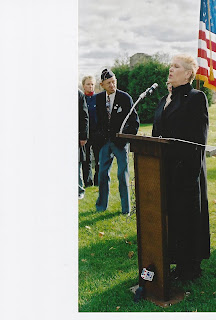Tuesday, April 27, 2010
Monday, April 26, 2010
Saturday, April 24, 2010
Friday, April 23, 2010
Michael Corcoran, 8th US Cavalry, Medal of Honor recipient. Cleveland, Ohio
Corporal James P. Brock, USMC. Born in Cleveland, Ohio
Fr. Francis J. McManus, S.J., Born in Cleveland, Ohio
FAILTE - to the website of Post #1 Irish American War Veterans in northeast Ohio
 For God and Country we vow to uphold and defend the Constitution of the United States of America. As Irish-American veterans, our goal is to recognize and honor the contribution and memory of those of Irish descent who have distinguished themselves in military and civilian life.
For God and Country we vow to uphold and defend the Constitution of the United States of America. As Irish-American veterans, our goal is to recognize and honor the contribution and memory of those of Irish descent who have distinguished themselves in military and civilian life.Post #1 meets on a quarterly basis at different locations in northeast Ohio.
For more information about us send an e-mail to irishamericanwarveterans@yahoo.com, or call 440.221.2038 , or print mail the application to POB 670685, Northfield, Ohio 44067-0685..
JC Sullivan, U.S. Army, USAEUR
Commander Emeritus
Mike Friery
U.S. Army, USAEUR
First Vice Commander
Russell Davis, U.S. Army, Panama
Treasurer
Richard B. Masterson, U.S.Air Force
Recording Secretary
Kevin McGinty, U.S. Army
Sentinel
Owen and Martin Kilbane
Historians
Chaplain
tba
Subscribe to:
Posts (Atom)





